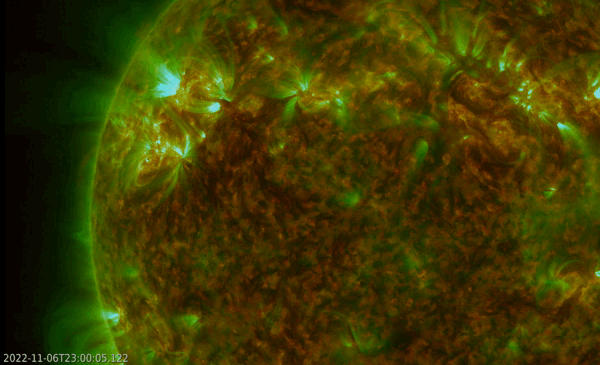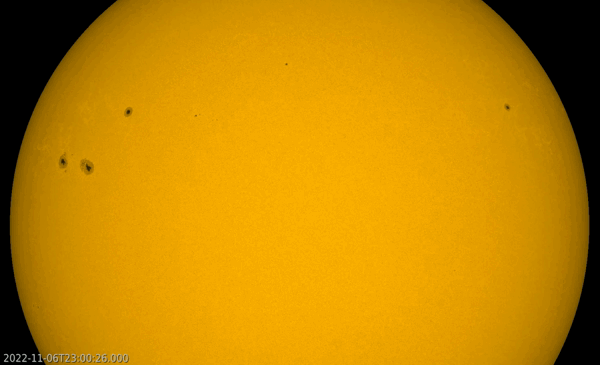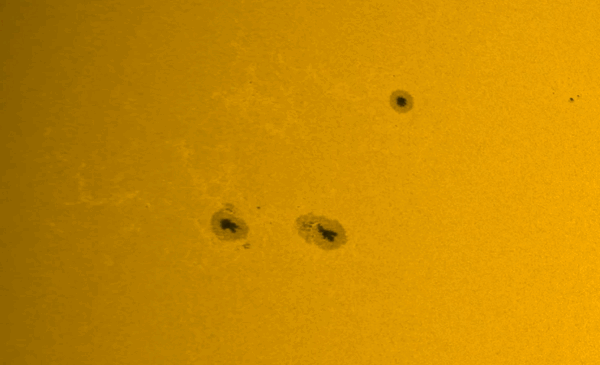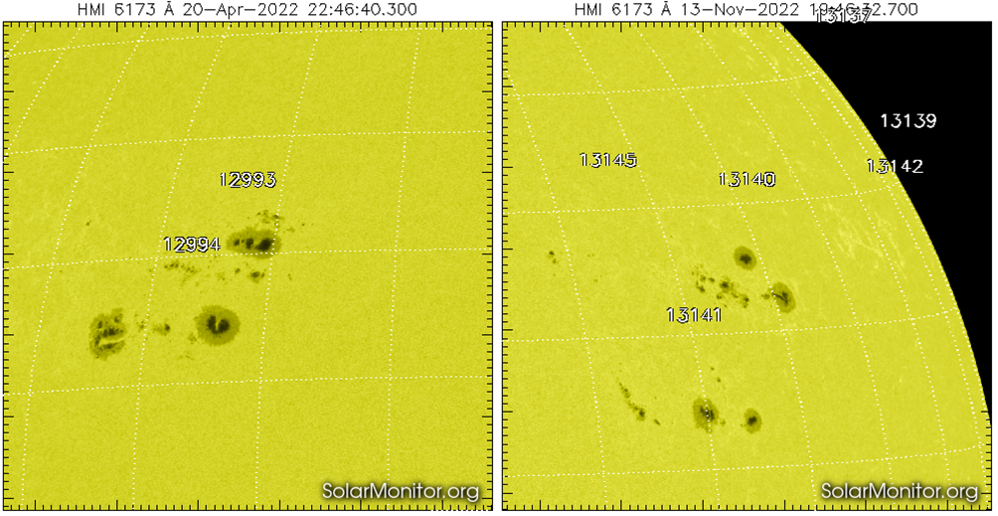NOAA 13141 rounded the solar east limb as a large sunspot group with a relatively simple magnetic configuration. The trailing portion of this active region produced an M5.2 flare peaking at 00:11UTC on 7 November. The clip underneath (still) has an SDO/AIA 171 image (greenish) overlaid on an SDO/AIA 304 image (reddish), showing the solar corona at temperatures of respectively 700.000 and 80.000 degrees. Most of the material associated with the eruption returned fairly quickly to its source location on the Sun.

The group then changed very little as it transited the solar disk, with signs of gradual decay in both the leading and trailing main spots. However, on 10 November, while the leading spot was in the process of splitting, some new magnetic flux emerged to the north of these leading spots producing 3 M1 flares in less than 24 hours. The new spots quickly followed the decaying trend of the sunspot group, and thus also the flaring activity diminuished. Meanwhile, a new sunspot group developed just south (less than 3 degrees) of the up-to-then solitary mature sunspot NOAA 13140, located 12 degrees north of NOAA 13141 (see the annotated SDO/HMI images from 7, 11 and 14 November here and the clips underneath).


NOAA 13140 continued to grow over the next few days, driving the x-ray background flux over the C1 level before producing a first M-class flare on 15 November. At times, the general outlook of the sunspot structure bore some resemblance to the sunspot group duo NOAA 12993 and 12994 that appeared in April this year. However, those two sunspot groups were much closer to each other than the current pair.






